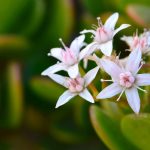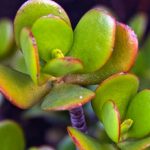Looking to enhance your indoor space with a ZZ plant? These robust plants have become highly sought-after for various reasons. Let expert gardener and plant lover, Madison Moulton, guide you through the planting, cultivation, and maintenance of ZZ plants!
Cacti & Succulents
Discover The Secret To Growing Beautiful ZZ Plants
ZZ plants, short for Zamioculcas zamiifolia, are sturdy indoor plants that top the list of virtually indestructible botanicals. Their long stems and vibrant green, thick, waxy leaves give them an almost artificial look.
These plants come in various cultivars with leaves ranging from maroon to black or featuring variegated patterns. ZZ plants thrive with minimal light and can tolerate a bit of neglect, making them ideal for beginner plant enthusiasts.
Also known as Zanzibar gems due to their African origins, or as eternity plants and emerald palms, ZZ plants are a wonderful addition to any collection of indoor flora.
ZZ Plant Overview
|
Plant Type
Houseplant
Family
Araceae
Genus
Zamioculcas
Species
Zamioculcas zamiifolia
|
Native Area
East Africa
Exposure
Low indirect light to bright light
Height
3 feet
Watering Requirements
Low maintenance
|
Discover ZZ Plants


The Araceae family hosts ZZ plants along with Peace Lilies and Philodendrons. These plants typically feature unique flowering structures, although ZZ plants are unlikely to bloom indoors.
The genus Zamioculcas shares similarities with the cycad genus Zamia, which led to its name.
Historical Roots
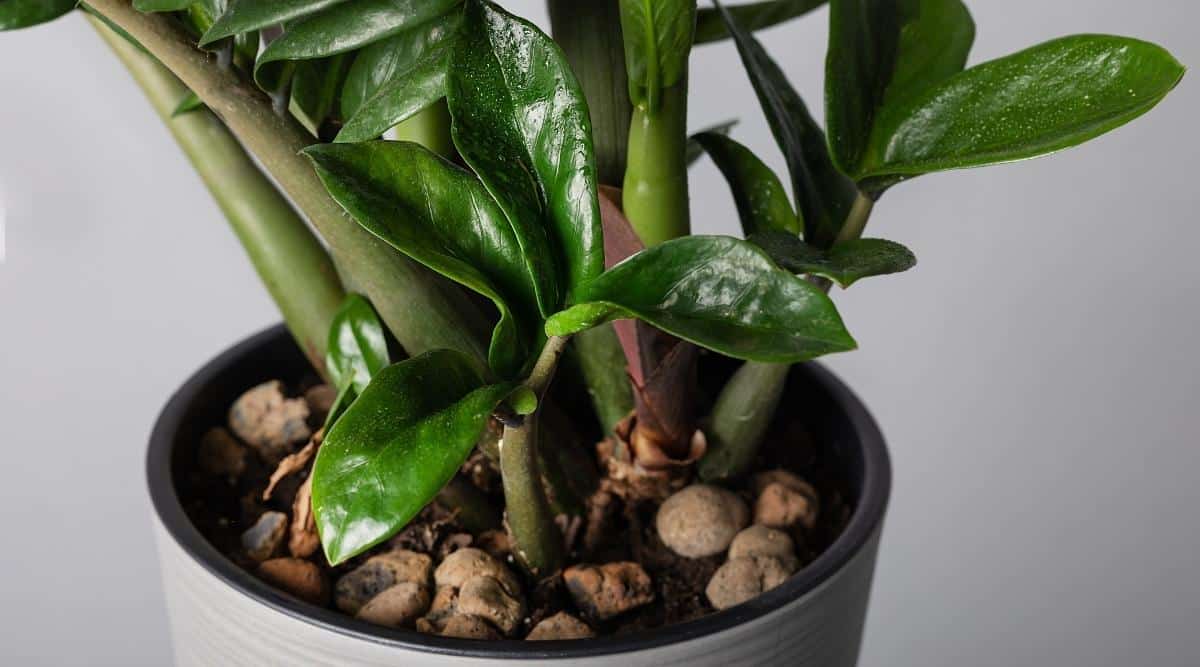

In 1829, George Loddiges first named the plant Caladium zamiifolium, noted for his botanical illustrations. The Austrian botanist, Heinrich Wilhelm Schott, later reassigned it to the genus Zamioculcas. Eventually, Adolf Engler bestowed the name Zamioculcas zamiifolia.
Dutch nurseries started commercially propagating ZZ plants in 1996, leading to their availability in nurseries worldwide.
Natural Habitat


ZZ plants thrive in African regions spanning from Kenya to South Africa, favoring grasslands and lowland forest areas with distinct wet and dry seasons.
The plant’s adaptability to dry environments explains its ability to withstand periods without water, contrary to other tropical species.
Distinct Features

Thriving from rhizomes resembling potatoes nestled below the surface, ZZ plants boast resilience during dry periods by storing water.
Emerging from these tubers are tall, cycad-like stems that can reach up to 4 feet in length. Featuring glossy green leaves measuring around 20 inches, their deep green hue enables efficient light absorption from dim settings, making them perfect for indoor cultivation.
Though infrequent, ZZ plants may flower, producing a cob-shaped inflorescence. In their natural habitat, blooming typically occurs after 5 to 6 years; however, indoor flowering is scarce.
The inflorescence develops a spadix containing pale cream flowers. Found at the top of the cob are male flowers, while female flowers reside at the base, with a ring of sterile flowers separating the two, making self-pollination nearly impossible. Blossoms emerge from the plant base.
Optimal care may encourage ZZ plants to bloom, but after a decade, propagation is necessary to facilitate flowering in new plants.
Cultivation Guide
The ZZ plant ranks amongst the simplest houseplants to nurture, thriving on neglect and flourishing in commonplace indoor conditions.
Lighting
Primarily thriving in bright indirect light, ZZ plants can also adapt well to low light conditions, albeit with some degree of stretching.
Tolerating direct light, this exposure may cause leaf damage, discernible by curling, yellowing, or leaning away from the light source. Brown leaf spots indicate potential sunburn signals.
Positioning near an east-facing window emanates optimal morning light, while north-facing windows offer reduced light. For south or west-facing windows, filter direct sunlight with curtains to avert harm.
Watering
Susceptible to overwatering issues, ZZ plants store ample water in their underground tubers, enabling endurance through prolonged droughts and rendering them sensitive to excess moisture.
While infrequent watering suffices, ensure the soil dries out between waterings. Watering frequency hinges on ambient heat and light exposure.
If unsure about when to water, delay watering for a few days rather than overwatering to avert rhizome decay and detrimental plant ramifications. Drain excess water thoroughly and refrain from leaving the plant in standing water.
Soil
Well-draining soil is imperative for ZZ plants. Employ a blend of premium potting soil and sand or opt for a succulent potting mix to ensure adequate air circulation around the roots to prevent rot.
Consider incorporating perlite into a houseplant potting mix, fostering water retention as needed while facilitating root oxygenation.
Temperature and Humidity
Thriving in tropical conditions, ZZ plants flourish in temperatures between 60F and 75F, withstanding a minimum of 45F. Sustain temperatures above 65F year-round for optimal growth, shielding them from drafts.
Tolerant of varied humidity levels, ZZ plants acclimate well to typical indoor conditions. To enhance the ambient humidity, use a humidifier in excessively dry surroundings to benefit your ZZ plant and other houseplants.
Fertilization

Minimal feeding is all ZZ plants need. They thrive in their soil for years without the need for extra nutrients. However, in case growth is sluggish or your plant seems to need a lift, consider using liquid fertilizer every 6-8 weeks during the active growth seasons of spring and summer.
To ensure quick nutrient absorption, utilize a balanced liquid houseplant fertilizer following the prescribed guidelines on its packaging. Avoid overfertilizing and halt feeding during the colder months when growth slows down.
Maintaining ZZ Plants
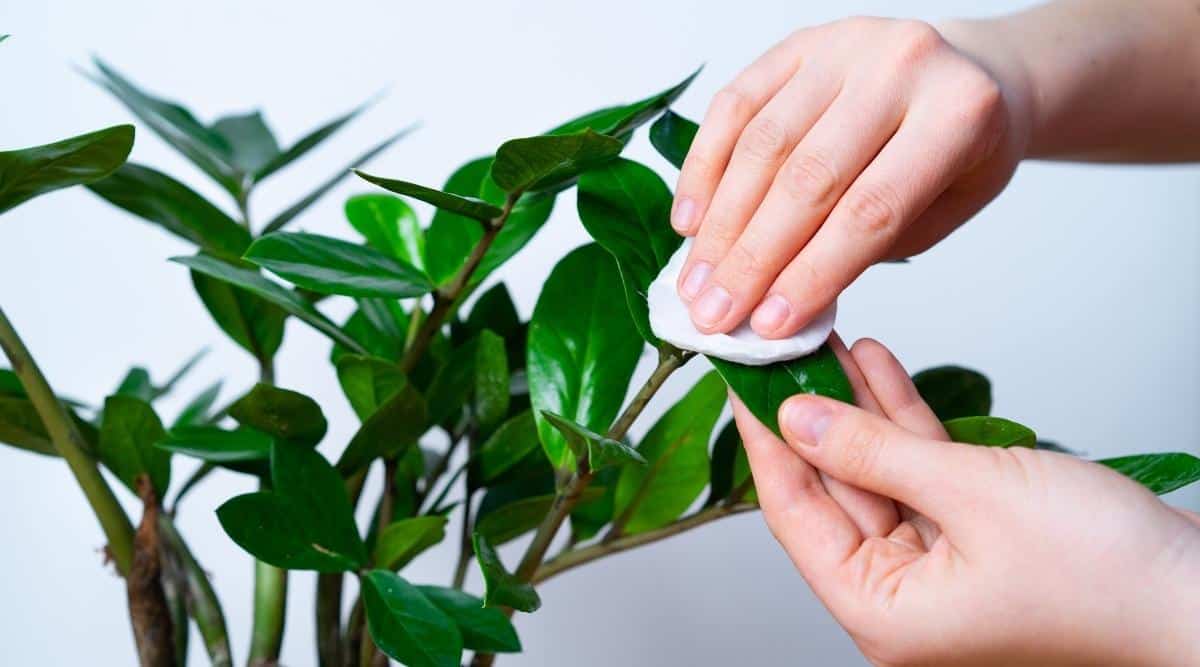
Pruning is rarely necessary for ZZ plants, except when you intend to propagate them. Trim any damaged, brown, or yellowing leaves and prune back overgrown stems if needed. For dusty leaves, gently wipe them with a moist cloth to enhance light absorption, especially crucial for plants in low-light conditions.
ZZ Plant Propagation Techniques
Zamioculcas zamiifolia can reproduce through leaf cuttings, stem cuttings, or division. Among these methods, division yields quicker results, providing a smaller replica of the original plant, while the others require more patience but can also yield new plants.
Plant Division for Propagation

Start with a mature plant that necessitates repotting. Make sure the plant is at least 2-3 years old before dividing to ensure its survival post-separation. Depending on its size, divide the plant into sections containing 3-5 stems each. Have the appropriate number of new containers ready before dividing and fill them with the recommended soil mix.
Post division, carefully extract the plant from its current pot, gently untangle the roots, and remove any excess soil, possibly rinsing the rhizomes. In cases where the plant is tightly rootbound, do not forcefully yank it out but rather loosen its edges or consider breaking the pot if necessary.
Study the plant for suitable division points, potentially using a utility knife to separate smaller roots or trim off damaged sections. Plant each section in new pots with fresh soil mix, water thoroughly, and care for as you would a mature plant.
Growing ZZ Plants from Stem Cuttings
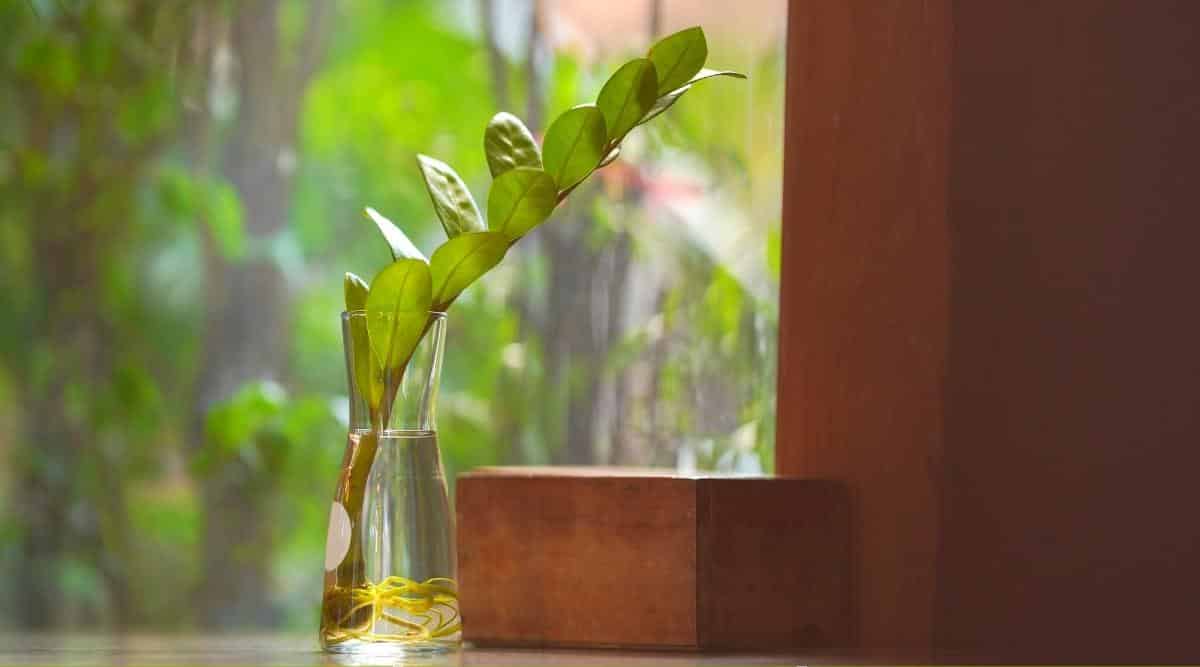
To propagate via stem cuttings, select a healthy stem and cut it cleanly at the base, ensuring no unsightly remnants. Slice the stem into sections around 4 inches each or leave it long, removing lower leaves. Opt to root the cuttings in water or planting medium, nurturing the emerging plants until they can be replanted in new pots.
This method aids in minimizing shock during transplantation and necessitates patience as it takes time for the cuttings to establish roots.
ZZ Plant Propagation through Leaf Cuttings

To propagate via leaf cuttings, detach healthy leaves from the plant, ensuring they contain sufficient tissue for root development. Propagating multiple leaves simultaneously increases the likelihood of successful propagation. Harness the potential of each leaf to cultivate numerous new plants, although patience is required for this process.
In water propagation, ensure the base of the cutting is consistently covered with water, maintaining the leaf mostly dry. Shot glasses work well to keep the leaves upright.
An efficient method to propagate leaf cuttings is by filling a tray or pot with a mix of coconut coir and perlite, then placing the leaves upright in the medium about a quarter of the way up.
Keep the tray moist and in a warm area for root development. It may take a few months for the roots to establish. Once the roots hold firm when tugged lightly, they are ready for transplanting into a new pot.
Repotting

For optimal growth, repot your ZZ plant in spring every 2-3 years if needed. Choose a pot slightly larger than the current one, prepare it with fresh potting medium, and gently free the plant, teasing the roots and trimming any damaged ones.
Plant the ZZ plant in the new pot, firming it in the potting medium and watering thoroughly. Follow regular care routines to promote new growth.
Common Problems
Issues with ZZ plants often stem from light, water, or nutrient imbalances. Yellowing or browning leaves may indicate overwatering or underwatering. To address sunburn marks, relocate the plant to a shaded spot.
Pests like scale insects can damage ZZ plants, causing leaves to droop and discolor. Treat an infestation promptly by removing the insects with warm soapy water or isopropyl alcohol, ensuring to monitor the plant’s health.
Aphids
These sap-sucking insects, aphids, can distort plant leaves. Rinse the plant with water outdoors to remove most aphids, then wipe off the rest with soapy water to manage their population effectively.
Mealybugs
Mealybugs further harm ZZ plants by causing yellowing leaves. Identify and eliminate them with soapy water or insecticidal soap, ensuring to address any potential reinfestations promptly.
Frequently Asked Questions
Are ZZ plants poisonous?
ZZ Plants contain calcium oxalate, which can cause stomach issues if ingested and skin irritation upon contact. Keep them away from pets and children to prevent any mishaps.
Are ZZ plants low maintenance?
ZZ plants are considered low maintenance due to their hardy nature and minimal care requirements. They are an excellent choice for beginner gardeners or those with busy schedules.
For new plant parents, the ZZ plant is a resilient choice, thriving with minimal attention. This plant is ideal for those who travel often – even after weeks of neglect, your ZZ plant will remain unfazed, maintaining its pristine condition.
How fast do they grow?
While not a rapid grower, the ZZ plant will eventually reach maturity after a few years of growth. Throughout winter, the plant remains dormant. In the active growing seasons of spring and summer, expect an average monthly growth of around 6 inches.
Final Thoughts
The ZZ plant is a must-have for every plant enthusiast. Its adaptability, pest resistance, and versatility in any room make it a standout choice. Plus, it’s a rare find as a bathroom plant, thriving in high humidity environments. Keep an eye out for the diverse leaf variations, from dark green to variegated options. It’s definitely worth collecting them all.
ZZ Plants are equipped with calcium oxalate, crystal-like structures that can cause stomach discomfort if consumed. These sharp-edged crystals may also irritate the skin upon contact. To avoid any issues, ensure your ZZ plant is placed out of reach of pets and children.



